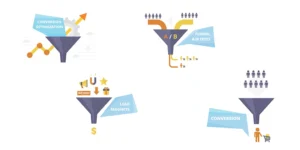Introduction
The year 2024 has brought forth a wave of algorithmic changes within Meta Ads, promising a more refined and personalized user experience. In this blog post, we delve into the intricacies of these changes, exploring their nature and dissecting the implications they hold for advertisers.
The Evolution of Meta’s Algorithm
To comprehend the recent algorithmic shifts, it’s essential to recognize Meta’s ongoing commitment to enhancing user engagement and satisfaction. Meta’s algorithms, the complex set of rules governing the display and targeting of ads, have seen a significant overhaul. These changes aim to align advertising content more closely with user preferences, fostering a more seamless integration of ads into the user experience.
Personalization Takes Center Stage
One of the critical algorithmic changes revolves around a heightened emphasis on personalization. Meta is now leveraging advanced machine learning techniques better to understand user behavior, interests, and interactions. This shift allows the platform to deliver ads that are contextually relevant and tailored to individual user preferences.
This means a greater emphasis on creating highly targeted and engaging content for advertisers. Understanding the nuances of your target audience becomes more critical than ever as the algorithm rewards ads that resonate with users on a personal level. Advertisers should utilize the platform’s precise targeting features to guarantee their content reaches the most appropriate audience segments.
Quality Over Quantity
In the wake of these algorithmic changes, the ‘quality over quantity’ mantra echoes louder than before. Meta’s updated algorithms prioritize ad content that provides genuine value to users. Advertisers should focus on crafting compelling narratives, high-quality visuals, and informative messaging to capture user attention.
Click-through rates and the amount of time individuals spend interacting with advertisements are examples of engagement metrics that are currently more crucial. Advertisers are encouraged to monitor these metrics closely, adjusting their strategies based on real-time performance data to optimize campaign outcomes.
Navigating Privacy Changes
Meta has implemented algorithmic changes to enhance data protection in response to the growing concerns surrounding user privacy. Stricter privacy measures mean advertisers must adapt their strategies to comply with evolving regulations. Understanding the updated privacy policies and aligning advertising practices accordingly will be paramount for long-term success on the platform.
The Implications for Advertisers
These algorithmic changes in Meta Ads bring both challenges and opportunities for advertisers. While the bar is set higher for creating compelling and personalized content, those who succeed stand to benefit from a more engaged and receptive audience.
Adapting to the evolving landscape requires a dynamic approach. Advertisers should stay agile, continuously monitoring performance metrics and tweaking their strategies to align with the ever-changing algorithmic landscape. Embracing data-driven insights and analytics tools becomes indispensable in navigating the nuances of Meta’s refined algorithms.
Conclusion
In conclusion, the algorithmic changes in Meta Ads for 2024 usher in a new era of advertising dynamics. Advertisers who embrace personalization, prioritize quality, and navigate privacy considerations are poised to thrive in this transformed digital ecosystem. As Meta continues to fine-tune its algorithms, staying informed and proactive will be the key to unlocking the full potential of advertising on this influential platform.
To know more about Meta Ads, Please visit https://paypercampaign.com/social-media-marketing/





